We have managed to get out and about quite a lot and have walked many an Argentinian mile. The day we arrived we spent some time in Plaza Dorrego, one of the main squares in the area filled with clothing, leather, jewellery and trinket traders and clusters of seating and tables serviced by the cafes located in the facing buildings. In several places lengths of carpet had been laid down over the cobbles to allow tango dancers to put on a show and then pass around the hat. It has now become a regular occurrence to pass someone with their carpet rolled up under their arm, on their way to dance or play music for others to dance to on some street corner.
On Sundays Defensa, the road parallel to ours and probably a mile long, is closed off and becomes a market, with lots of handmade goods, food, drinks, music, dancing and general merry-making, so this was our initiation into the area when we arrived
. We also found a statue of Mafalda, a very popular Argentinian cartoon character and a bit of a legend, sitting on a bench in San Telmo. Mafalda is deeply concerned about humanity and world peace and rebels against the world as it is. She now sits outside the home of her creator, Quino, where people fight over who sits beside her next to have their photo taken (including Jen!). Since then we’ve also explored further afield into other areas of Buenos Aires.
We tried to visit the Casa Rosada, the presidential offices from where Eva Peron addressed the masses from the balcony. However, when we got there, it seemed to be very secure and unopened to visitors! We stood and imagined Eva on the balcony in front of us instead and then went for coffee in the plaza!
Recoleta cemetery is a place not to be missed in Buenos Aires and this is where we headed last Saturday. It’s where the very rich and famous, including Eva Peron of course, are buried
. There are huge mausoleums, often with several family members within them, usually with locked doors, glazed so that you can see in but not enter (not until you’re dead!). Many have shelves bearing coffins and stairs going down into a catacomb which can contain further bodies. The mausoleums are so big that walking around the cemetery is a bit like strolling through a small village, with small but very ornate houses closely packed either side of the lanes.
It was very interesting to explore the cemetery and read the dedication plaques from their friends and family to work out who the people were and what they had done in life. Quite a few were names that were familiar from the street names but of course we rarely know who they really were! You have to be very wealthy to be buried here and there is an ongoing cost in annual rent, so some tombs have been abandoned and lie in a very bad state. It was interesting to find a huge tomb with a monumental mosaic Jesus and large statues of Mary and a saint, but no plaque to say whose tomb it was
. Then we spotted the screw holes from where the name plate had been removed and realised they must have been evicted for non-payment of rent. So if any of you have a few quid to spare and would like a nice burial plot, see our photo’s!
While we were in the cemetary we met a guy from Delhi, India and chatted for a while. He is a partner in a law firm which retains the name of the British lawyer in Calcutta who set the firm up. A while ago someone doing consultancy work for them said that they had seen a tomb in a Calcutta cemetary relating to the name, almost certainly from the family if not the founder himself. Our friend was now resolved to find the tomb (secretly we think hoping that it will be one of these extravagent monuments!)
From the cemetery we went on to see the Floris Generica, a huge metal flower which has solar cells within it which operate the petals so that they open in the morning and close at night. We weren’t there at the right time to see it move, but it was quite impressive anyhow! (And kind of more artistic than most of the Big Things that we went to see in OZ!)
We walked a lot this particular day and our next stop was the Grand Splendid bookshop which occupies a fabulous antique cinema where Carlos Gardel, Argentina‘s tango legend apparently crooned on stage on days gone by
. The circles, balconies and boxes are still in place and there are chairs around so that you can sit in a box or on a balcony reading books and looking out over the rest of the shop / cinema or gazing up at the amazing painted ceiling . And if you‘re in need of refreshment, then there’s the coffee shop on the 1920’s stage! (Incidently we did hear that Gardel made a visit to Britain in the 1930s. After his performance in Blackpool he had time to spare and went north into Scotland and gave a number of impromptu free performances in village halls etc, which means he still has a strong fanbase in rural Scotland)
We picked up free newspapers about local events. It's all in Spanish, of course - it‘s good practice but by the time we‘ve translated it we‘ve often missed it! However, this time we discovered that there was a free jazz gig going on that evening in the bar of a hotel on our long route back to the apartment. We eventually located it and arrived an hour late in true Argentinian style, or so we thought (not by planning, just bad organisation on our part!). We settled ourselves in to a couple of spare seats only to discover that it was the last minute of the last number! Oh well… Rosa will be glad to know that we are continuing the tradition of arriving a day late or a week late as we always seemed to do in Australia.
We ate out that night Argentinian style, at 11
.30pm, at La Poesia, an old café bar where poets, musicians and writers used to gather. It is very atmospheric and they do a really good tortilla and cheeseboard and the best beer we‘ve tasted in Buenos Aires!
On Sunday we decided to do something more local as we had tired and aching feet from the previous day. So we went to El Zanjon de Granados. This is an early 19th century house which had fallen into disrepair. San Telmo was a wealthy area in 19th century but in the later part of the century a yellow fever epidemic hit the area and the wealthy moved to the higher ground further north. Many of the big old houses in San Telmo then became tenements for the poor, with a family living in each room, and others were just left to deteriorate completely. This house was very derelict, was literally filled with rubbish and had trees growing through it when a local business man bought it a few years ago with the prospect of turning it into a restaurant. However, when they started to dig out all the rubbish to do the renovations, underneath the mansion they discovered the remains of even older houses from the 1700s and also a series of tunnels, sewers and wells going back to 1730
. The owner decided that this was worth preserving and has therefore undertaken an excellent restoration project which makes the building usable whilst showing how it was originally constructed, where modifications have taken place over the life of the building and revealing the ruins of the old houses and tunnels underneath the house.
Learning about this house gave us better understanding of the lay out of old Argentinian houses such as the one we’re staying in. Ours, although much smaller than this one has a similar layout, with the house separated into three areas separated by two courtyards. The section at the front, facing onto the street would apparently have been a shop or workshop, the section at the back would be the living area and the section in the middle, where our apartment now is, would separate the two areas and, as we guessed, be used as storage or stabling. El Zanjon de Granados is double fronted, creating a huge hall the whole length of the house on the other side of the passageway and courtyards. This is now hired out for functions, and very grand they must be too!
That evening, Tony nearly put our place into the need for renovation. There are very few sockets in the house and when he plugged the extension lead into the new double adaptor we had bought, he dropped the extension lead on the concrete floor causing a short. There was a very loud bang, a huge amount of smoke and a very strong smell of burning plastic! Fortunately he was ok and nothing seems to be damaged other than the extension lead, which is very definitely never going to work again. We lost all the lights and electrics, which was exciting, but it was just that the fuses had tripped so it was easily solved once we worked out which switches need to be up and down. Ho hum! It all keeps us on our toes!
Out and about in Buenos Aires
Sunday, November 01, 2009
 Buenos Aires, Distrito Federal, Argentina
Buenos Aires, Distrito Federal, Argentina
Other Entries
-
28Rubyvale to Calen; back towards the coast
Sep 0656 days prior Calen, Australiaphoto_camera19videocam 0comment 8
Calen, Australiaphoto_camera19videocam 0comment 8 -
29Calen to Townsville
Sep 0755 days prior Townsville, Australiaphoto_camera19videocam 0comment 0
Townsville, Australiaphoto_camera19videocam 0comment 0 -
30Townsville to Cardwell and Tully and on to Cairns
Sep 0854 days prior Cairns, Australiaphoto_camera9videocam 0comment 3
Cairns, Australiaphoto_camera9videocam 0comment 3 -
31Cairns to Cape Tribulation: we got here!!!
Sep 1250 days prior Cape Tribulation, Australiaphoto_camera68videocam 0comment 3
Cape Tribulation, Australiaphoto_camera68videocam 0comment 3 -
32Diving the Ribbon Reefs; into the Cod Hole!
Sep 1646 days prior Cod Hole, Great Barrier Reef, Australiaphoto_camera26videocam 0comment 4
Cod Hole, Great Barrier Reef, Australiaphoto_camera26videocam 0comment 4 -
33Lizard Island and a low flight down the QLD coast
Sep 1745 days prior Lizard Island, Australiaphoto_camera26videocam 0comment 1
Lizard Island, Australiaphoto_camera26videocam 0comment 1 -
34Mission Beach
Sep 1943 days prior Mission Beach, Australiaphoto_camera24videocam 0comment 5
Mission Beach, Australiaphoto_camera24videocam 0comment 5 -
35Mission Beach to Townsville (and some more diving)
Sep 2141 days prior Townsville, Australiaphoto_camera22videocam 0comment 4
Townsville, Australiaphoto_camera22videocam 0comment 4 -
36Townsville to Giru (or just outside anyway)
Sep 2240 days prior Giru, Australiaphoto_camera21videocam 0comment 3
Giru, Australiaphoto_camera21videocam 0comment 3 -
37Giru to Sarina
Sep 2339 days prior Sarina, Australiaphoto_camera5videocam 0comment 0
Sarina, Australiaphoto_camera5videocam 0comment 0 -
38Sarina to Kinka Beach (no, that was KinkA Beach!)
Sep 2438 days prior Kinka Beach, Australiaphoto_camera16videocam 0comment 2
Kinka Beach, Australiaphoto_camera16videocam 0comment 2 -
39Kinka Beach to 1770; that's a place, not a number!
Sep 2537 days prior 1770, Australiaphoto_camera48videocam 0comment 5
1770, Australiaphoto_camera48videocam 0comment 5 -
401770 to Rainbow Beach (but no pot of gold!)
Sep 2636 days prior Rainbow Beach, Australiaphoto_camera33videocam 0comment 0
Rainbow Beach, Australiaphoto_camera33videocam 0comment 0 -
41Beaches Wars! From Rainbow to Dicky!
Sep 2933 days prior Dicky Beach, Australiaphoto_camera23videocam 0comment 0
Dicky Beach, Australiaphoto_camera23videocam 0comment 0 -
42Dicky Beach to Brisbane: we made it!
Sep 3032 days prior Deagon, Brisbane, Australiaphoto_camera6videocam 0comment 2
Deagon, Brisbane, Australiaphoto_camera6videocam 0comment 2 -
43Brisbane: revisited and departed
Oct 1715 days prior Deagon, Brisbane, Australiaphoto_camera79videocam 1comment 6
Deagon, Brisbane, Australiaphoto_camera79videocam 1comment 6 -
44Buenos Aires: faded elegance
Oct 284 days prior Buenos Aires, Argentinaphoto_camera32videocam 0comment 4
Buenos Aires, Argentinaphoto_camera32videocam 0comment 4 -
45Out and about in Buenos Aires
Nov 01 Buenos Aires, Argentinaphoto_camera66videocam 1comment 6
Buenos Aires, Argentinaphoto_camera66videocam 1comment 6 -
46Carlinhos Brown in Buenos Aires
Nov 021 day later Buenos Aires, Argentinaphoto_camera5videocam 0comment 1
Buenos Aires, Argentinaphoto_camera5videocam 0comment 1 -
47Rainy Days in Buenos Aires
Nov 032 days later Buenos Aires, Argentinaphoto_camera12videocam 0comment 0
Buenos Aires, Argentinaphoto_camera12videocam 0comment 0 -
48La Boca: Colour, life and tourist tat
Nov 054 days later Buenos Aires, Argentinaphoto_camera45videocam 0comment 0
Buenos Aires, Argentinaphoto_camera45videocam 0comment 0 -
49Madness, music and Las Madres
Nov 065 days later Buenos Aires, Argentinaphoto_camera19videocam 0comment 0
Buenos Aires, Argentinaphoto_camera19videocam 0comment 0 -
50Buenos Aires cafes and bars
Nov 087 days later Buenos Aires, Argentinaphoto_camera27videocam 0comment 4
Buenos Aires, Argentinaphoto_camera27videocam 0comment 4 -
51A very wet day in San Antonio de Areco
Nov 1312 days later San Antonio de Areco, Argentinaphoto_camera36videocam 1comment 3
San Antonio de Areco, Argentinaphoto_camera36videocam 1comment 3 -
52Final days in Buenos Aires
Nov 1817 days later Buenos Aires, Argentinaphoto_camera90videocam 0comment 4
Buenos Aires, Argentinaphoto_camera90videocam 0comment 4 -
53Montevideo - it's not yet changed to Monte-DVD!
Nov 2019 days later Montevideo, Uruguayphoto_camera59videocam 0comment 5
Montevideo, Uruguayphoto_camera59videocam 0comment 5 -
54Salto; hot springs, wet rain
Nov 2322 days later Salto, Uruguayphoto_camera49videocam 0comment 4
Salto, Uruguayphoto_camera49videocam 0comment 4 -
55Fray Bentos; that sounds familiar!
Nov 2524 days later Fray Bentos, Uruguayphoto_camera48videocam 0comment 0
Fray Bentos, Uruguayphoto_camera48videocam 0comment 0 -
56Colonia; every house a museum?
Nov 2827 days later Colonia del Sacramento, Uruguayphoto_camera46videocam 0comment 6
Colonia del Sacramento, Uruguayphoto_camera46videocam 0comment 6 -
57Buenos Aires - Slight Return
Nov 3029 days later Buenos Aires, Argentinaphoto_camera33videocam 3comment 4
Buenos Aires, Argentinaphoto_camera33videocam 3comment 4 -
58Hot News! Uruguay election results!
Dec 0130 days later Buenos Aires, Argentinaphoto_camera1videocam 0comment 0
Buenos Aires, Argentinaphoto_camera1videocam 0comment 0 -
59What makes Rosario such a good place to live?
Dec 0332 days later Rosario, Argentinaphoto_camera60videocam 0comment 8
Rosario, Argentinaphoto_camera60videocam 0comment 8 -
60Mercedes; final resting place of Gauchito Gil
Dec 0635 days later Mercedes, Argentinaphoto_camera33videocam 1comment 0
Mercedes, Argentinaphoto_camera33videocam 1comment 0 -
61Pellegrini; floating islands, crocs and big rats!
Dec 0837 days later Colonia Carlos Pellegrini, Argentinaphoto_camera73videocam 0comment 2
Colonia Carlos Pellegrini, Argentinaphoto_camera73videocam 0comment 2 -
62Your mission, if you choose to accept it...
Dec 1140 days later San Ignacio, Argentinaphoto_camera37videocam 1comment 1
San Ignacio, Argentinaphoto_camera37videocam 1comment 1 -
63Iguazu falls: so that's where all the rain went!
Dec 1544 days later Puerto Iguazú, Argentinaphoto_camera47videocam 2comment 1
Puerto Iguazú, Argentinaphoto_camera47videocam 2comment 1
Comments
2025-05-22
Comment code: Ask author if the code is blank

 Buenos Aires, Distrito Federal, Argentina
Buenos Aires, Distrito Federal, Argentina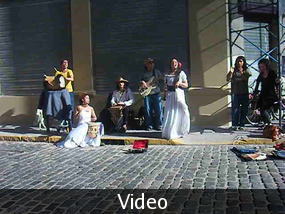
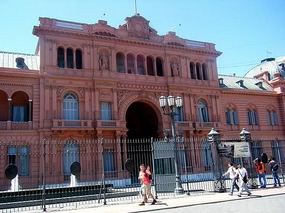
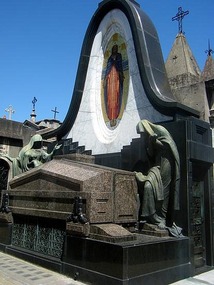
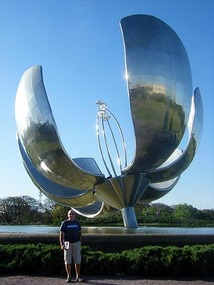
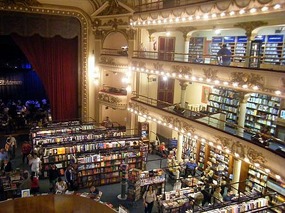
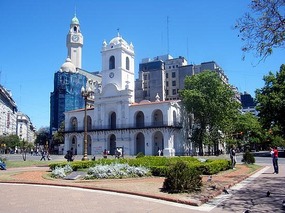



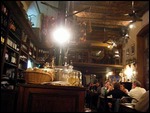
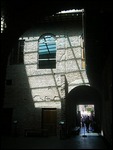
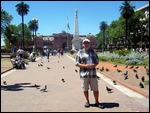
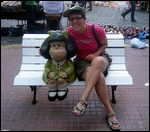
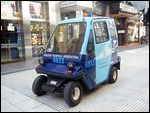
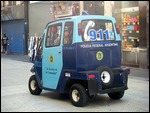


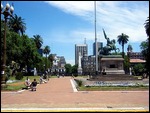
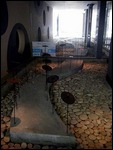
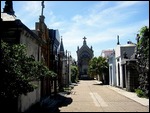
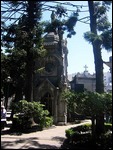
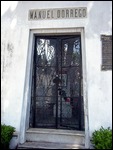
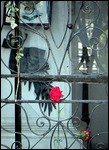
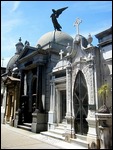
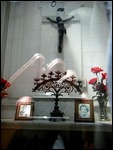
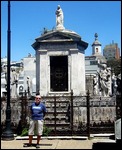

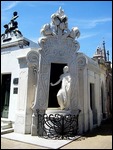
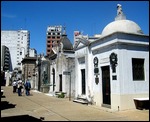
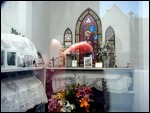
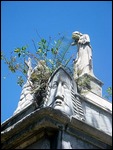
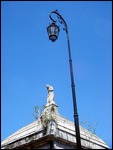
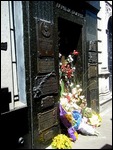
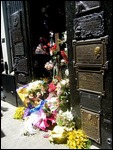
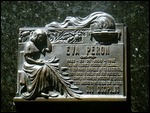
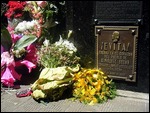
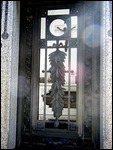
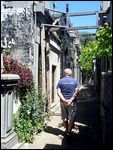
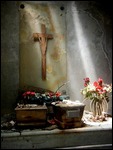
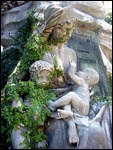
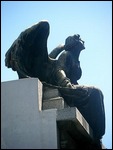
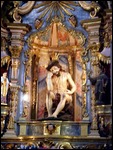
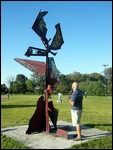
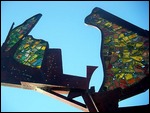
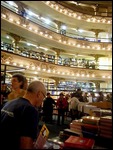
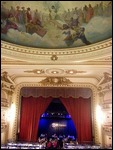

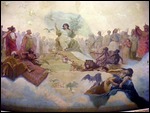
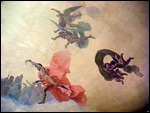
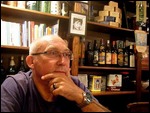
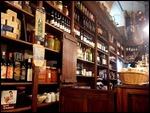
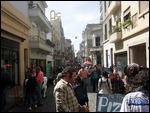

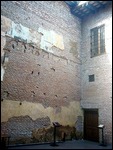
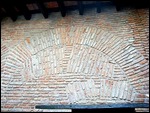
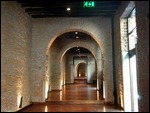
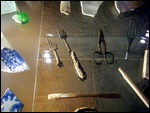

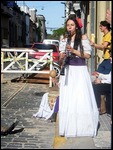

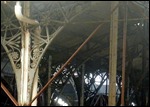
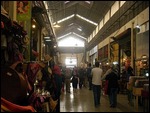
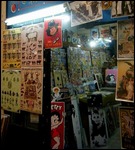
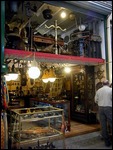
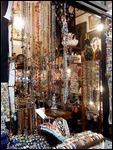
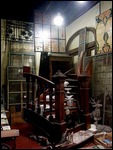
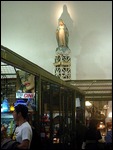
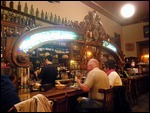

mx-5.snob
2009-11-02
Busy Bees
Wow you have been getting about..... you had better slow down a wee bit if you're to make it through 6 months :)
Looks absolutely fabulous and as for Jen's twin on the bench.... great reunion :)